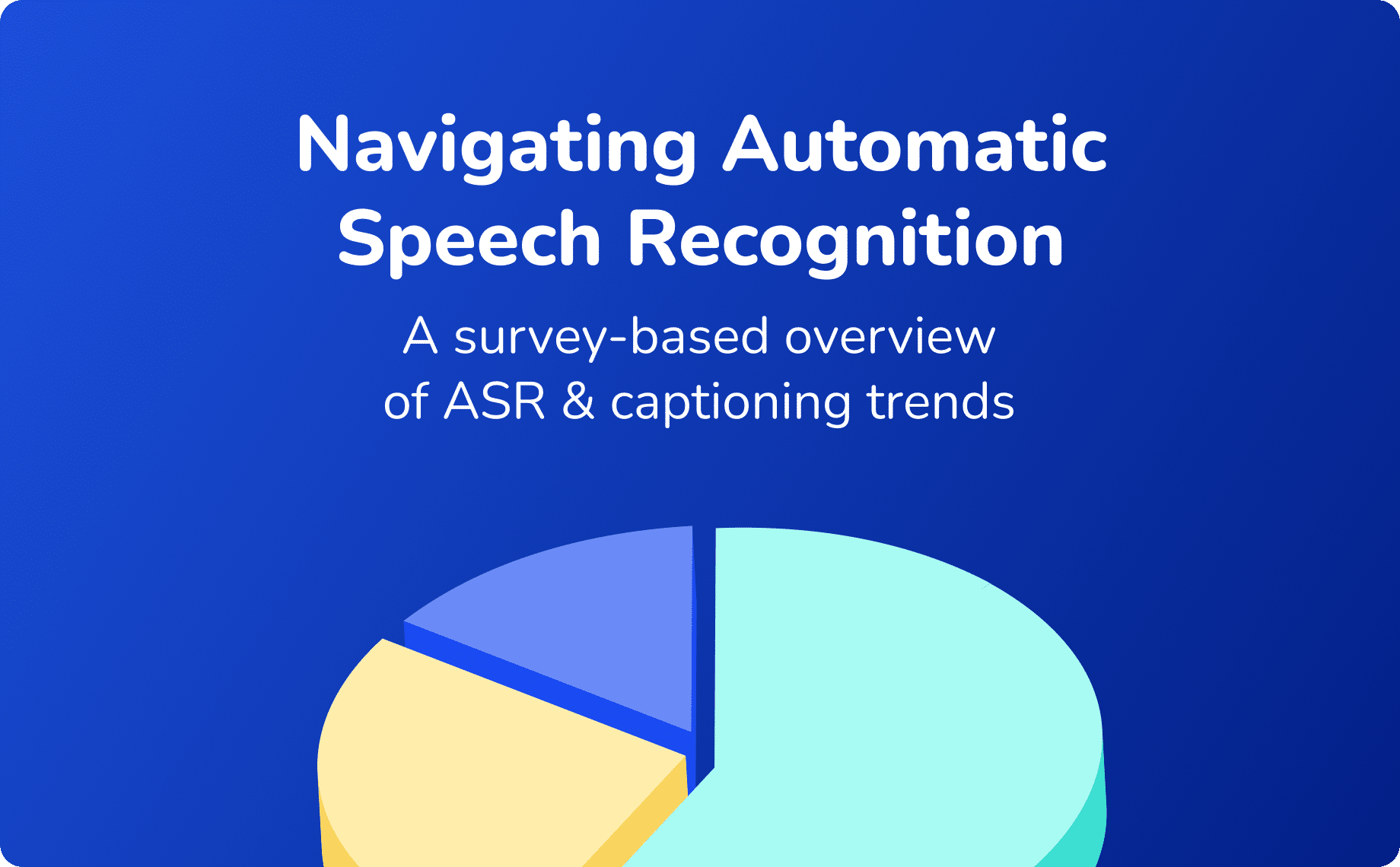Did you know that the average person watches at least 17 hours of online video content every single week? With so much content available across a nearly endless assortment of digital platforms, business leaders and creators must constantly find new ways to get their message across. Thankfully, many video hosting sites offer insights into how they categorize and distribute content to users.
Understanding video SEO is vitally important for anyone looking to reach new, broader audiences. Implementing effective SEO strategies can help your content become more readily available and accessible to audience members who might otherwise have missed or overlooked your videos. In the sections below, we will explore some of the basics of video SEO and discuss best practices for improving the discoverability of your online video content.
What is Video SEO?
Search engine optimization or SEO refers to the process of crafting your online content and web pages in such a way as to improve the quality and quantity of traffic to your site. Think about it like this: Every time you search a set of keywords on YouTube, Google or another search engine, that engine shows you a long list of results that seem relevant to your search. The idea behind SEO is to structure your content in such a way as to ensure that a search engine will reflect it higher up in the search results. The higher a video appears in a search result, the more likely a user is to view and engage with that content.
SEO strategies can help your content appear higher on a list of search results and drive additional traffic to your video, channel or page. With the right tools, creators can harness the complexities of SEO algorithms to their benefit and boost their audience engagement rates overall. Let’s explore some best practices for optimizing your online media content for improved SEO.

Keyword Research
The SEO process relies heavily upon the use of certain optimized keywords. SEO keywords are specific terms that will increase web traffic and improve the page’s search ranking. It’s important to conduct a substantial amount of research to determine which keywords would be most relevant and effective for your content.
As a general rule of thumb, you want to pinpoint a handful of keywords with high search volumes but relatively low rates of competition. It’s also helpful to choose keywords that already have a high search ranking, as long as these keywords are not overused and overly competitive. There are several keyword search platforms available to creators online. Some YouTube-specific keyword resources include:
- YTCockpit
- VIDIQ
- Ahrefs Keyword Explorer
Doing keyword research that is specific to your intended media platform or preferred search engine will prevent your SEO strategy from becoming overly general. It’s also not a bad idea to search simultaneously for keywords that tend to perform well across multiple search engines. For example, if you’re hoping to optimize your content for YouTube’s search algorithm, you may also want to research keywords that perform well on Google to maximize your potential conversion rates.

Metadata Optimization
Once you’ve selected your target keywords, you’ll need to start incorporating those keywords into your content. It’s important to do your due diligence in optimizing as many digital components as possible to maximize your results. That’s where metadata optimization comes in.
Metadata for your site can include things like:
- Titles
- Video Descriptions
- Tags
- Thumbnails
- File Names
- Categories
- Subtitles and Captions
- Title cards and End screens
Essentially, it’s possible to optimize any text-based component of your video channel or webpage for SEO purposes. Generally speaking, this looks like including keywords in your titles, descriptions, file names, etc. This is important because search engines like Google and YouTube cannot “crawl” video content and parse out relevant keywords and search terms. As a result, it is critical that you include keywords in other textual elements to improve your content’s visibility. Using your keywords sparingly but effectively can make a world of difference when it comes to your search ranking. It’s also important to keep your titles and descriptions brief, engaging and easy to understand.
Content Optimization
The best way to build your audience is to create quality content. SEO practices may be able to help visitors find your content, but it’s your job to keep them coming back for more. Optimizing your content may sound easier said than done, but it’s fundamentally a creator’s responsibility to produce quality, engaging video content for their audience.
As a creator, it is critical that you understand your target audience and center your SEO strategies around them. Maintaining a key awareness of your viewers’ intent when consuming your content can make it easier for you to produce materials that deliver what audiences are seeking. Creating quality content and supporting it with effective SEO practices can help you build your audience and boost engagement. Tailoring the length, style and overall quality of your videos to the expectations of your desired audience can appeal to new viewers and keep existing viewers dialed in.
Another critical consideration for content optimization is accessibility. One of the best ways to ensure your content reaches a larger, more diverse audience is to take steps to ensure that everything you share is accessible and inclusive to all. You can improve the accessibility of your video content by offering resources like captioning, transcription and audio description of your digital media. Each of these tools is designed to support audience members with specific disabilities, but accessibility tools can actually benefit all viewers in the long run.
It’s important to note that, in addition to improving accessibility, tools like captioning and transcription can also improve a creator’s SEO ranking. The reason for this is that captions and transcripts essentially convert audio and video content to text that a search engine’s algorithm can access. While captions generally appear within a video platform, transcripts of video content can be shared broadly across a variety of platforms which can further improve your content’s discoverability.

Distribution
Once you complete the work of producing your optimized content, it’s time to focus on distributing it to your target audience. Today’s digital world offers an ever-expanding roster of platforms, apps and devices where users can access videos, so it’s important to have a well-developed strategy for sharing your content with as broad an audience as possible.
In addition to posting your video on your original, intended platform, you can also share links to your content on various social media sites to drive further traffic. You can also “build links” to your content by asking other individuals to share your video link on a site, page or profile they own. You can also build links by adding a link to your video to your own online profiles. For example, when you release a new video on YouTube, you can add a link to that video in the “Biography” section of your Instagram page. Making your video’s link readily available to your followers can drive up your video’s views and allow you to appear higher in subsequent search results.
Tracking Performance
Once you’ve incorporated all of these strategies, all you can do is wait. Digital media platforms like YouTube offer users access to robust video analytics that can help creators get a sense of how their audience is receiving their videos. As you work to build your online presence, metrics like watch time, views and traffic sources can be invaluable data points. You should pay attention to these when continuing to develop your outreach strategy.
Tracking these data points can make it easier for you to identify areas that could use improvement and can also help you pinpoint specific trends in user activity. Once you gather and analyze your data, you can make adjustments to your SEO strategy and take advantage of the trends and patterns. For example, if you notice that videos containing one specific keyword tend to outperform your other videos, you may want to prioritize incorporating that keyword into your subsequent content offerings.

Forging Partnerships for Video SEO
Content creation is not an exact science, and it often takes a certain amount of trial and error to find your groove. Setting aside the extra time to research keywords and optimize your video content, however, can have a major impact on the discoverability and popularity of your content. You can optimize your content, metadata, and marketing strategies to drive more traffic to your content and take advantage of SEO resources to achieve a greater ROI on your production efforts.
Verbit is a proud provider of tried-and-true tools like captioning and transcription that help creators improve the SEO ranking of their video content while offering more inclusive viewing experiences to audience members. If you’re interested in learning more about how captions can improve SEO or would like additional information about Verbit’s industry-leading captioning and transcription technology, reach out today.




